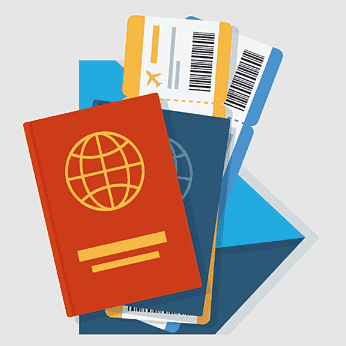Types of Loans Available in the U.S. (2025 Update)
Loans are a major part of everyday financial life in the United States. Whether you want to buy a car, pay for college, start a business, or handle an emergency, there’s likely a loan option available for your specific need. But with so many types of loans out there, it can be confusing to know which one is right for you.
In this guide, we’ll explain the most common types of loans available in the U.S. as of 2025, how they work, and what they’re best used for. Understanding these loan categories will help you make better financial choices and avoid costly mistakes.
1. Personal Loans
A personal loan is a type of unsecured loan, which means you don’t need to offer any collateral like a car or house to borrow money. These loans are typically used for various purposes, such as debt consolidation, medical expenses, home improvements, or large purchases.
You borrow a fixed amount and repay it in monthly installments, usually over one to seven years. Interest rates depend on your credit score and income, and can range from low (if you have good credit) to high (if your credit is poor).
Best for: General expenses, debt consolidation, emergencies
Where to get it: Banks, credit unions, online lenders
2. Student Loans
Student loans are designed to help students pay for education-related expenses such as tuition, books, and living costs. There are two main types of student loans in the U.S.:
Federal student loans: Offered by the government with fixed interest rates, income-driven repayment options, and forgiveness programs.
Private student loans: Provided by banks or private companies, often requiring a credit check and sometimes a co-signer.
Federal loans are usually the better option due to flexible repayment plans and protections.
Best for: Paying for college or graduate school
Where to get it: U.S. Department of Education, banks, credit unions
3. Auto Loans
An auto loan helps you buy a new or used car. It is usually a secured loan, meaning the car itself acts as collateral. If you stop making payments, the lender can repossess the car.
Loan terms can range from 24 to 84 months. A longer term means lower monthly payments but more interest paid over time. You typically need a decent credit score to get a good interest rate.
Best for: Buying a vehicle
Where to get it: Car dealerships, banks, online lenders, credit unions
4. Mortgage Loans
A mortgage is a loan used to buy a home. These are large, long-term loans, often lasting 15 to 30 years. The house serves as collateral. If you fail to pay, the lender can foreclose on the property.
There are several types of mortgage loans:
Fixed-rate mortgages (same interest rate for the whole term)
Adjustable-rate mortgages (interest rate changes over time)
FHA and VA loans (for first-time buyers or veterans)
Best for: Buying a home or refinancing an existing home loan
Where to get it: Mortgage lenders, banks, credit unions
5. Home Equity Loans and HELOCs
If you already own a home and have built up equity (the value of the home minus what you owe), you may qualify for a home equity loan or a Home Equity Line of Credit (HELOC).
A home equity loan gives you a lump sum with a fixed interest rate.
A HELOC is a revolving credit line, similar to a credit card, that you can draw from over time.
These loans are secured by your home, so missing payments can put your property at risk.
Best for: Home renovations, big expenses, debt consolidation
Where to get it: Banks, mortgage lenders, credit unions
6. Payday Loans
Payday loans are short-term, high-interest loans that are often used by people who need quick cash before their next paycheck. These loans usually have to be paid back in full within two weeks to a month.
While they are easy to get and require little paperwork, they are risky and expensive. Annual percentage rates (APRs) can reach 300% or more, leading many people into a cycle of debt.
Best for: Emergency cash (only as a last resort)
Where to get it: Payday loan stores, some online lenders
7. Credit Builder Loans
Credit builder loans are small loans designed to help people build or repair their credit. Instead of receiving the money upfront, the lender holds the loan amount in a savings account while you make monthly payments. Once the loan is paid off, you get the money.
These loans are reported to credit bureaus, so they can improve your credit score if paid on time.
Best for: People with no credit or poor credit
Where to get it: Credit unions, community banks, fintech apps
8. Debt Consolidation Loans
Debt consolidation loans are used to combine several debts (usually high-interest ones like credit card balances) into one single loan with a lower interest rate. This makes it easier to manage payments and can save you money on interest.
This type of loan is typically a personal loan but may also involve home equity or balance transfer credit cards.
Best for: Managing multiple debts and lowering interest
Where to get it: Online lenders, banks, credit unions
9. Business Loans
Business loans help entrepreneurs and business owners finance startup costs, equipment, payroll, or expansion. These loans can be secured or unsecured, and may require a detailed business plan and proof of revenue.
There are several types:
SBA loans (guaranteed by the U.S. government)
Term loans
Equipment financing
Merchant cash advances
Best for: Small business funding
Where to get it: SBA lenders, banks, online platforms like Kabbage, Fundbox
10. Lines of Credit
A line of credit allows you to borrow up to a certain limit and only pay interest on the amount you use. It’s a flexible borrowing option that can be reused as you repay the balance.
There are personal lines of credit and business lines of credit. A credit card is a type of revolving credit, but some lines of credit are more flexible and may offer lower rates.
Best for: Ongoing or unpredictable expenses
Where to get it: Banks, credit unions, online lenders
As of 2025, there are many different types of loans available to meet the unique needs of individuals and businesses in the United States. From personal and student loans to mortgages and business financing, each type serves a different purpose and comes with its own rules, benefits, and risks.
Before taking out any loan, it’s important to understand how it works, compare offers, and make sure you can afford the payments. The right loan can help you reach your goals, but the wrong one can cause financial stress.
At RankingLoans.com, we help you compare top-rated loan options, understand the fine print, and choose the solution that’s best for your life and budget.

